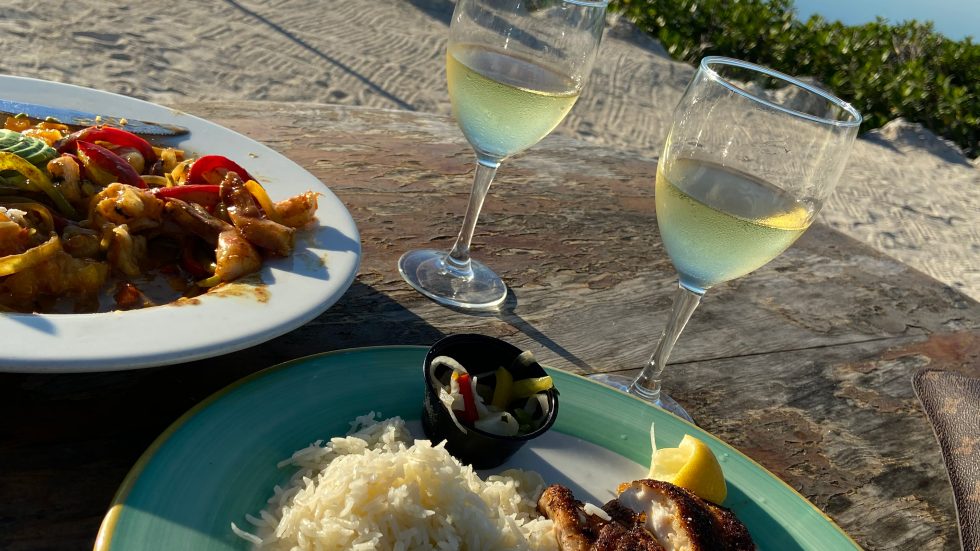Every boat that ventures out on a large body of water should carry a marine radio, and someone who knows how to operate it. A 25-watt Very High Frequency (VHF) marine radio is your best lifeline if you need help, but it is only as good as the operator. Many boaters install radios but fail to read the manual and don’t use it properly. Use of the old CB hailing manner, “Hey, good buddy, you out there?” is not only improper, it is prohibited.
Many base stations and vessels are responsible for maintaining a listening post to receive emergency calls. All emergency response personnel that respond on the water listen to VHF Channel 16; it is the international distress, safety, and calling channel. Emergency distress calls need to be placed on Channel 16. Vessels with a VHF radio turned on are required to monitor Channel 16.
Improper — and often illegal — use of a marine radio ties up channels and creates problems for other boaters and listeners. When you install a marine radio, read the manual and acquaint yourself with the proper channel use. If you do not understand its proper use, you could jeopardize someone who needs emergency assistance. You could also need assistance and not be able to alert those that could help you.
Marine Radios Vs Other Devices
First, idle chitchat is not welcome on the marine radio. It should be limited to brief transmissions. Often dozens of other boaters are waiting patiently to use the same channel you are using; they have no interest in your conversation. If you carry a cell phone aboard, use that device for idle chatting.
Boaters soon discover the use of a 25-watt VHF radio requires a good antenna. Many don’t want to install an antenna mount on their boat, so they elect to use a handheld radio. However, handhelds are not intended for long-distance use, as they were designed for communications from a main radio to barge lookouts or on-deck watch standers on large vessels. They have a limited output of watts, as well as a short antenna that restricts the radio’s range to about one mile.
When an emergency arises, using a handheld radio as a primary means of calling is a poor choice. The signals often fail to reach a monitoring station. In cases where nearby boaters might be able to relay calls for help, the five-watt radio signal is not strong enough for rescuers to direction find (DF). The results are long delays in emergency response, delays that could be fatal in worst-case situations.
Many boaters today feel they don’t need a radio if they carry a cell phone, but this option provides a false sense of security. If a boater using a cell phone needs emergency assistance and doesn’t know his vessel’s exact location, even though contact might be possible with the Coast Guard or another assisting resource, rescuers cannot DF on a cell phone signal. Use of a cell phone also often results in long delays.
Advantages of a Marine Radio
When a boater requests assistance from a land-based station such as the Coast Guard, a vessel can get under way very quickly. After the Coast Guard begins its search and prior to their arrival, nearby boaters often renders assistance. This aspect is a distinct advantage of the use of a 25-watt marine radio — most boaters are eager to help one another in an emergency.
Should you receive assistance from another source, be sure to advise the Coast Guard immediately. Remember, they are an emergency response resource. When you notify them that they’re no longer needed, they can stand down from your case and become available to help other boaters. If you fail to notify the Coast Guard when their assistance is no longer required, hours could be spent searching. Costs mount as the search continues. Aircraft might be deployed; others urgently in need of rescue will be left waiting.
When advised that voluntary help is on scene, the Coast Guard will often establish a communications watch and check on your situation at 15-minute intervals. This continued watch will assure you and the Coast Guard of your safety and let them know when you have made port.
Few boaters venture out on large bodies of water expecting an emergency. But when one arises and help is needed, a good 25-watt VHF marine radio might be the only way help can be obtained. Decide what your life, or those of your passengers, is worth and then check out how little a marine radio and a good antenna cost. You’ll soon see the price is really no object.
Checklist for Requesting Assistance
- A 25-watt VHF marine radio is the best means of calling.
- Tun to channel 16. Transmit “pan-pan, pan-pan, pan-pan” if you are in need of assistance due to a breakdown or mechanical issue. Give you vessel’s name, position, and reason for needing assistance.
- If a life or your vessel is in imminent danger, call “mayday, mayday, mayday” and state your boat’s name, location, and specific emergency.
- If you are using a handheld radio, go to the open deck of your boat, hold up the radio with the antenna pointing straight up, and place your call.
- If you are using a cell phone, call the nearest Coast Guard station direct. Do not end you call without giving your area code and cell number; the person assisting needs your number to help them locate your poistion and gather further information.





